#apomixis
Text
The genetic control of apomixis is based on the altered expression of the same genes that control the normal development of the nucellus and megagametophyte.
"Plant Physiology and Development" int'l 6e - Taiz, L., Zeiger, E., Møller, I.M., Murphy, A.
#book quote#plant physiology and development#nonfiction#textbook#genetic control#apomixis#nucellus#megagametophyte#plant cells
0 notes
Text
dandelion facts:
Stories about dandelions can be found in folklore almost worldwide!
Dandelions have a diuretic effect (they make you pee,) which is reflected in some of their common names (piss-a-bed)
most North American dandelions reproduce asexually by apomixis, creating loads of identical daughters!
Since they reproduce asexually, these dandelions don't need to be pollinated, even though they produce lots of pollen and nectar. The dandelions that pop up in a lawn feed pollinators without receiving any benefit for themselves.
Dandelion seeds can sprout at any temperature between 0 and 36 degrees Celsius!
Dandelions can regenerate themselves from just a piece of their taproot!
dandelions have a near worldwide distribution and were introduced to North America as a food crop!
Dandelions grow bigger and produce more viable seeds in conditions of higher carbon dioxide, suggesting that human-caused carbon emissions are good news for the dandelions!
Dandelions have been shown to pass epigenetic changes to their DNA caused by stress to their offspring.
4K notes
·
View notes
Note
In honor of Pride Month, do you have any LGBTQ+ worldbuilding headcanons for any alien species in the Ben 10 Cinematic Universe, whether biological or societal/cultural?
Biologically, I consider Pyronites agender at default (inevitably by process of space travel and meeting cultures in which gender is prevalent there will be Pyros who think social gender sounds awesome actually and promptly trans their gender), we’ve only seen Pryonite transformations and hybrids as full characters, leaving them up for interpretation in my opinion. Any two of the species can mate, in which they will mutually erupt in flame until a rocky body is formed from their combined material and a fire inhabits it.
(Which results in a very interesting kink scene for other species with a thing for burning)
Vulpimancers lack a social concept of romance. Which in a way means they have an aromantic society but also not because they have no reference of what romance is to consider themselves devoid of it.
Necrofriggians are an agender and sexless species we all know this.
Anur Transyl has a very prominent queer scene, it effectively goes hand in hand with accepting so many different cultures as a multi species planet.
On that note, Ectonurites are a sexless species that reproduces via apomixis. Though they do have a cultural understanding of gender that translates to our understanding of m/f, but it has nothing to do with anything thing related to reproduction.
Tetramand culture has a very prominent f/f culture in its history. Many of female Tetramand that were unable to be defeated by any man were instead eventually bested by a woman and were promptly betrothed. These pairs were typically renowned as images of strength. M/m couples took longer to be accepted, unfortunately, initially being regarded as both partners being too weak to court a female.
Polymorphs are biologically sexless and socially genderless. Single cell organisms don’t have much to work with.
Lepidopterrians are a tri-sex species. Sexualities are thought us which of those the individual is attracted to. Three for exclusive attraction to each one, three for any combination of two of them, and one for attraction to all and any. Which of the three the individual happens to be is not considered.
Piscciss Volanns have the natural ability to change their sex when their current environment necessitates. Now however, it is used also as a way to transition for bodily dysmorphic transgender Volanns. Due to the larger size and different physicality of the females compared to the males, it’s a long and rather strenuous process, but is met with much celebration when completed.
Planchaküle treat genderfluidity as the default. They love their adaptations after all. Can’t leave one thing as it is for too long.
Methanosians have four sexes. Two which produce pollen, pollination functions with only one of them providing the pollen, but the two of them joining together in the act results in more diverse offspring and is the social norm. The other two are the pollinated. The first of them will always bare offspring of the two pollinator sexes, while the other will always bare offspring of the pollenated sexes. Perhaps not the most streamlined reproduction cycle but it seems to be working for them.
Cerebroian Currmary all default to male as a result of their biological programming. This was unintentional of the Cerebrocrustians, but they would claim otherwise. Many decide they prefer to be female, neither, or both however.
Galvanic Mechamorphs don’t have sex, but they do base their gender off of the Galvan’s because they think it’s neat.
That’s all off the top of my head. Happy pride to you anon!
#my asks#ben 10#headcanon#pyronite#vulpimancer#necrofriggian#anur system#ectonurite#tetramand#polymorph#lepidoterran#piscciss volann#planchaküle#methanosian#atomix#cerebroian currmary#galvanic mechamorph
23 notes
·
View notes
Photo

Precious Children are extruded from the entrails of Black God at gift points throughout the world. Precious Children reach adulthood when their mass exceeds a critical threshold, wherein their skin sags and their pores dilate and each hole yields seeds of ignition via divine apomixis.
Follow @unsettlingstories for more; please reblog or tip to support.
All images and text are © Max Lobdell, 2022.
176 notes
·
View notes
Text




Apomixis, Tane's luxury floricultura. Tane has been mostly a one-man show, but has been looking to jump into the mainstream market to hopefully increase his revenue. His goal is to start selling wedding bouquets to upscale clients in the near future as long as all goes to plan. For now, he just continually trains his employees into their best versions.
Previous | Beginning | Next
#ts4#ts4 storytelling#ts4 gameplay#ts4 challenge#simblr#osl#OSL Legacy Challenge#oh so loved legacy#the almeidas
7 notes
·
View notes
Text

Native plant miniprints posts part five! These prints will be available on my etsy on the equinox, m.20 2023.
Since part of why I wanted to work on this project is that I wanted to learn more about familiar, local plantlife (I'm on treaty 7), I figured I should share some of that information while posting them. Of you have any other information about these plants please share!
Mountain Hollyhock, Iliamna rivularis
- Related to okra and hibiscus as a mallow, which is exciting to me because I want to see if it can be used as neri in papermaking
- Like a number of our native species it needs heat to germinate, and is often prolific after a fire.
- Though ironically it's primarily found by mountain streams.
Rocky Mountain Bee Plant, Peritoma serrulata
- Can be a little stinky but VERY attractive to pollinators and great for bee keepers for honey yeilds
- Used for a yellow green dye
Rosey Pussytoes, Antennaria rosea
- Gets its name from looking like fuzzy toebeans
- Interestingly, most groups are clones and the mostly reproduce through apomixis meaning the seeds are unfertilized- so its pretty rare to find male flowers.
find the rest of the posts here, including any future additions:
1/2/3/4/5/(tbc)
#ill add tags and edit the hyperlinks and formatting tonight#that is not a job for mobile#so if u wanna wait to rb thats chill
4 notes
·
View notes
Photo

"APOMIXIS"
Acrylic paint and ink on canvas, 40 x 40 cm, 2022.
Daily : https://www.instagram.com/nisheink
Paintings : https://nisheink.bigcartel.com
“This project is about representing abstract nature and human designed technologies evolving together at the same time, but not in the same way/direction.
The texture part (representing nature vs machines) is obsessively controlled, confined in a precise rectangle, trying to escape.
The lettering, machine like but done by hand, is imperfect. It represent the fact that there's always humans behind any technology.
Both are trying to fit in the same place, yet not invading each other.
Chaos in control, control in chaos.“
12 notes
·
View notes
Text
Just as in humans, sex organ
Just as in humans, sex organ is organized by penis and vagina
How is sex mating formed in plants
Once pollen gets transferred to the stigma the male gametes from pollen grains release and fuse with the egg in the ovule to form a zygote. This process of fusion of gametes is called fertilization. The zygote thus formed, divides and develops into an embryo, and later into a seed. The ovary develops into a fruit.
12.5: Mating Systems in Plants
Biology LibreTexts
https://bio.libretexts.org › ... › 12: Sex Strategies
4 Mar 2024
Asexual Reproduction
Many plants are facultatively sexual rather than obligately sexual. Asexual reproduction is a type of reproduction where the offspring comes from one parent only, thus, inheriting the characteristics of the parent. Asexual reproduction in plants occurs in two fundamental forms vegetative reproduction and agamospermy.1 Vegetative reproduction involves a vegetative piece of the original plant producing new individuals by budding, tillering, etc. and is distinguished from apomixis, which is a replacement of sexual reproduction, and in some cases involves seeds. Apomixis occurs in many plant species such as dandelions (Taraxacum species) and also in some non-plant organisms. For apomixis and similar processes in non-plant organisms, see parthenogenesis.
Natural vegetative reproduction is a process mostly found in perennial plants, and typically involves structural modifications of the stem or roots and in a few species leaves. Most plant species that employ vegetative reproduction do so as a means to perennialize the plants, allowing them to survive from one season to the next and often facilitating their expansion in size. A plant that persists in a location through vegetative reproduction of individuals constitutes a clonal colony. A single ramet, or apparent individual, of a clonal colony is genetically identical to all others in the same colony. The distance that a plant can move during vegetative reproduction is limited, though some plants can produce ramets from branching rhizomes or stolons that cover a wide area, often in only a few growing seasons. In a sense, this process is not one of reproduction but one of survival and expansion of biomass of the individual. When an individual organism increases in size via cell multiplication and remains intact, the process is called vegetative growth. However, in vegetative reproduction, the new plants that result are new individuals in almost every respect except genetic. A major disadvantage of vegetative reproduction, is the transmission of pathogens from parent to offspring. It is uncommon for pathogens to be transmitted from the plant to its seeds (in sexual reproduction or in apomixis), though there are occasions when it occurs.2
Seeds generated by apomixis are a means of asexual reproduction, involving the formation and dispersal of seeds that do not originate from the fertilization of the embryos. Hawkweeds (Hieracium), dandelions (Taraxacum), some species of Citrus and Kentucky blue grass (Poa pratensis) all use this form of asexual reproduction. Pseudogamy occurs in some plants that have apomictic seeds, where pollination is often needed to initiate embryo growth, though the pollen contributes no genetic material to the developing offspring.3 Other forms of apomixis occur in plants also, including the generation of a plantlet in replacement of a seed or the generation of bulbils instead of flowers, where new cloned individuals are produced.
Sexual Reproduction
Sexual reproduction involves two fundamental processes: meiosis, which rearranges the genes and reduces the number of chromosomes, and fertilisation, which restores the chromosome to a complete diploid number. In between these two processes, different types of plants and algae vary, but many of them, including all land plants, undergo alternation of generations, with two different multicellular structures (phases), a gametophyte and a sporophyte.
In mosses and liverworts, the gametophyte is relatively large, and the sporophyte is a much smaller structure that is never separated from the gametophyte. In ferns, gymnosperms, and flowering plants (angiosperms), the gametophytes are relatively small and the sporophyte is much larger. In gymnosperms and flowering plants the megagametophyte is contained within the ovule (that may develop into a seed) and the microgametophyte is contained within a pollen grain.
In the evolution of early plants, abiotic means, including water and much later, wind, transported sperm for reproduction. The first plants were aquatic, and released sperm freely into the water to be carried with the currents. Ancestral land plants like liverworts and mosses have motile sperm that swam in a thin film of water or were splashed in water droplets. As taller and more complex plants evolved, modifications in the alternation of generations evolved. In the Paleozoic era progymnosperms reproduced by using spores dispersed on the wind and many gymnosperms and some angiosperms still rely on wind for gamete dispersal. The seed plants including seed ferns, conifers and cordaites have pollen grains that contain the male gametes for protection of the sperm during the process of transfer from the male to female parts. Angiosperms, or flowering plants, are the most derived and most abundant plant species and they rely on flowers producing pollen and ovules for reproduction.
Self-Fertilization and Self-Incompatibility
Many species of plants, particularly those which produce both staminate and pistillate flowers or produce ‘perfect’ bisexual flowers, also have the ability to reproduce sexually with themselves. This is advantageous particularly if pollination services are unreliable or unpredictable, as it ensures the plant still has some fitness. Self-pollination is a form of pollination in which pollen from the same plant arrives at the stigma of a flower (in flowering plants) or at the ovule (in gymnosperms). The term selfing that is often used as a synonym, is not limited to self-pollination, but also applies to other types of self-fertilization. Plants may either be obligately self-fertilizing, or facultatively so. In facultatively selfing plants, there may be mechanisms which delay selfing, such as stamens that are initially reflexed but move to come into contact with the stigma. About 42% of flowering plants exhibit a mixed mating system in nature.4 In the most common kind of system, individual plants produce a single flower type and fruits may contain self-pollinated, out-crossed or a mixture of progeny types. Another mixed mating system is referred to as dimorphic cleistogamy. In this system a single plant produces both open, potentially out-crossed and closed, obligately self-pollinated cleistogamous flowers.5
Still other species are self-incompatible, and will reject their own pollen grains if they land on their own stigmatic surface. These plants are obligately outcrossing, and must successfully sexually reproduce with another member of their species. In plants with SI, when a pollen grain produced in a plant reaches a stigma of the same plant or another plant with a matching allele or genotype, the process of pollen germination, pollen-tube growth, ovule fertilization, or embryo development is inhibited, and consequently no seeds are produced. SI is one of the most important means of preventing inbreeding and promoting the generation of new genotypes in plants and it is considered one of the causes of the spread and success of angiosperms on the earth.
Outcrossing Fertilization
Plants that use insects or other animals to move pollen from one flower to the next have developed greatly modified flower parts to attract pollinators and to facilitate the movement of pollen from one flower to the insect and from the insect back to the next flower. Flowers of wind-pollinated plants tend to lack petals and or sepals; typically large amounts of pollen are produced and pollination often occurs early in the growing season before leaves can interfere with the dispersal of the pollen. Many trees and all grasses and sedges are wind-pollinated.
Plants have a number of different means to attract pollinators including color, scent, heat, nectar glands, edible pollen and flower shape. Along with modifications involving the above structures two other conditions play a very important role in the sexual reproduction of flowering plants, the first is the timing of flowering and the other is the size or number of flowers produced. Often plant species have a few large, very showy flowers while others produce many small flowers, often flowers are collected together into large inflorescences to maximize their visual effect, becoming more noticeable to passing pollinators. Flowers are attraction strategies and sexual expressions are functional strategies used to produce the next generation of plants, with pollinators and plants having co-evolved, often to some extraordinary degrees, very often rendering mutual benefit. Specialization can be advantageous because it results in more consistent pollination services. As a result, the specialized pollinator and plant can exert strong selective pressure on each other, leading to coevolution. Examples of this include the coevolution between figs and fig wasps, or yucca and yucca moths, wherein the yucca moths are both the obligate pollinators and the antagonistic herbivores of yucca. Another visually striking example is the co-evolution of long floral corollas and long beaks or proboscii in pollinators 12.5.1A+B
.
In plants, sex is organised through pollen, but in fish, the most mysterious kind of sex is organised. Male fish release semen into the water and female fish eat it.
Translate Hindi
जैसे मनुष्य में सेक्स निवारण पेनिस और वेजाइना द्वारा संगठित होता है
पौधों में सेक्स संगम कैसे बनता है
एक बार जब पराग वर्तिकाग्र में स्थानांतरित हो जाता है, तो पराग कणों से नर युग्मक मुक्त हो जाते हैं और बीजांड में अंडे के साथ जुड़कर युग्मनज बनाते हैं। युग्मकों के संलयन की इस प्रक्रिया को निषेचन कहा जाता है। इस प्रकार बनने वाला युग्मनज विभाजित होकर भ्रूण में विकसित होता है और बाद में बीज में बदल जाता है। अंडाशय फल में विकसित होता है।
12.5: पौधों में संभोग प्रणाली
जीव विज्ञान LibreTexts
https://bio.libretexts.org › ... › 12: सेक्स रणनीतियाँ
4 मार्च 2024
अलैंगिक प्रजनन
कई पौधे अनिवार्य रूप से यौन के बजाय कल्पित रूप से यौन होते हैं। अलैंगिक प्रजनन एक प्रकार का प्रजनन है जहाँ संतान केवल एक माता-पिता से आती है, इस प्रकार, माता-पिता की विशेषताओं को विरासत में लेती है। पौधों में अलैंगिक प्रजनन दो मौलिक रूपों में होता है: कायिक प्रजनन और अगामोस्पर्मी। 1 कायिक प्रजनन में मूल पौधे का एक कायिक भाग शामिल होता है जो कलिकायन, टिलरिंग आदि द्वारा नए ��्यक्तियों का उत्पादन करता है और यह अपोमिक्सिस से अलग होता है, जो लैंगिक प्रजनन का प्रतिस्थापन है और कुछ मामलों में इसमें बीज शामिल होते हैं। अपोमिक्सिस कई पौधों की प्रजातियों जैसे सिंहपर्णी (टारैक्सैकम प्रजाति) और कुछ गैर-पौधे जीवों में भी होता है। गैर-पौधे जीवों में अपोमिक्सिस और इसी तरह की प्रक्रियाओं के लिए, अनिषेकजनन देखें।
प्राकृतिक कायिक प्रजनन एक ऐसी प्रक्रिया है जो ज्यादातर बारहमासी पौधों में पाई जाती है और इसमें आमतौर पर तने या जड़ों और कुछ प्रजातियों के पत्तों में संरचनात्मक संशोधन शामिल होते हैं। अधिकांश पौधों की प्रजातियां जो कायिक प्रजनन का उपयोग करती हैं, वे पौधों को बारहमासी बनाने के साधन के रूप में ऐसा करती हैं, क्लोनल कॉलोनी का एक एकल रेमेट या स्पष्ट व्यक्ति आनुवंशिक रूप से उसी कॉलोनी के अन्य सभी के समान होता है। वानस्पतिक प्रजनन के दौरान एक पौधा जिस दूरी तक जा सकता है, वह सीमित होती है, हालांकि कुछ पौधे शाखाओं वाले प्रकंदों या स्टोलन से रेमेट का उत्पादन कर सकते हैं जो अक्सर केवल कुछ ही बढ़ते मौसमों में एक विस्तृत क्षेत्र को कवर करते हैं। एक अर्थ में, यह प्रक्रिया प्रजनन की नहीं बल्कि जीवित रहने और व्यक्ति के बायोमास के विस्तार की है। जब एक व्यक्तिगत जीव कोशिका गुणन के माध्यम से आकार में बढ़ता है और बरकरार रहता है, तो इस प्रक्रिया को वनस्पति वृद्धि कहा जाता है। हालाँकि, वनस्पति प्रजनन में, परिणामस्वरूप जो नए पौधे बनते हैं, वे आनुवंशिक को छोड़कर लगभग हर मामले में नए व्यक्ति होते हैं। वनस्पति प्रजनन का एक बड़ा नुकसान माता-पिता से संतानों में रोगजनकों का संचरण है। पौधों से उसके बीजों में रोगाणुओं का संचार होना असामान्य है (यौन प्रजनन या अपोमिक्सिस में), हालांकि ऐसे मौके भी आते हैं जब ऐसा होता है।2 अपोमिक्सिस द्वारा उत्पन्न बीज अलैंगिक प्रजनन का एक साधन है, जिसमें ऐसे बीजों का निर्माण और फैलाव शामिल होता है जो भ्रूण के निषेचन से उत्पन्न नहीं होते हैं। हॉकवीड्स (हिरासियम), डंडेलियन (टारैक्सैकम), साइट्रस की कुछ प्रजातियाँ और केंटकी ब्लू ग्रास (पोआ प्रेटेंसिस) सभी अलैंगिक प्रजनन के इस रूप का उपयोग करते हैं। स्यूडोगैमी कुछ पौधों में होती है जिनमें अपोमिक्सटिक बीज होते हैं, जहाँ भ्रूण के विकास को आरंभ करने के लिए अक्सर परागण की आवश्यकता होती है, हालाँकि पराग विकासशील संतानों में कोई आनुवंशिक सामग्री नहीं देता है।3 पौधों में अपोमिक्सिस के अन्य रूप भी होते हैं, जिसमें बीज के स्थान पर पौधे का निर्माण या फूलों के बजाय बल्बिल का निर्माण शामिल है, जहाँ नए क्लोन किए गए व्यक्ति उत्पन्न होते हैं। यौन प्रजनन
यौन प्रजनन में दो मूलभूत प्रक्रियाएँ शामिल हैं: अर्धसूत्रीविभाजन, जो जीन को पुनर्व्यवस्थित करता है और गुणसूत्रों की संख्या को कम करता है, और निषेचन, जो गुणसूत्र को पूर्ण द्विगुणित संख्या में पुनर्स्थापित करता है। इन दो प्रक्रियाओं के बीच, विभिन्न प्रकार के पौधे और शैवाल भिन्न होते हैं, लेकिन उनमें से कई, जिनमें सभी भूमि पौधे शामिल हैं, दो अलग-अलग बहुकोशिकीय संरचनाओं (चरणों), एक गैमेटोफाइट और एक स्पोरोफाइट के साथ पीढ़ियों के परिवर्तन से गुजरते हैं।
मॉस और लिवरवॉर्ट्स में, गैमेटोफाइट अपेक्षाकृत बड़ा होता है, और स्पोरोफाइट एक बहुत छोटी संरचना होती है जिसे कभी भी गैमेटोफाइट से अलग नहीं किया जाता है। फ़र्न, जिम्नोस्पर्म और फूल वाले पौधों (एंजियोस्पर्म) में, गैमेटोफाइट अपेक्षाकृत छोटे होते हैं और स्पोरोफाइट बहुत बड़ा होता है। जिम्नोस्पर्म और फूल वाले पौधों में मेगागैमेटोफाइट बीजांड के भीतर होता है (जो बीज में विकसित हो सकता है) और माइक्रोगैमेटोफाइट पराग कण के भीतर होता है।
प्रारंभिक पौधों के विकास में, अजैविक साधनों, जिसमें पानी और बहुत बाद में हवा शामिल है, ने प्रजनन के लिए शुक्राणुओं का परिवहन किया। पहले पौधे जलीय थे, और धाराओं के साथ ले जाने के लिए पानी में स्वतंत्र रूप से शुक्राणु छोड़ते थे। लिवरवॉर्ट और मॉस जैसे पैतृक भूमि पौधों में गतिशील शुक्राणु होते हैं जो पानी की एक पतली परत में तैरते थे या पानी की बूंदों में छींटे होते थे। जैसे-जैसे लम्बे और अधिक जटिल पौधे विकसित हुए, पीढ़ियों के परिवर्तन में संशोधन विकसित हुए। पैलियोज़ोइक युग में प्रोजिम्नोस्पर्म हवा में फैले बीजाणुओं का उपयोग करके प्रजनन करते थे और कई जिम्नोस्पर्म और कुछ एंजियोस्पर्म अभी भी युग्मक फैलाव के लिए हवा पर निर्भर हैं। बीज वाले पौधों में बीज फ़र्न, कोनिफ़र और कॉर्डाइट्स में पराग कण होते हैं जिनमें नर युग्मक होते हैं जो नर से मादा भागों में स्थानांतरण की प्रक्रिया के दौरान शुक्राणु की सुरक्��ा करते हैं। एंजियोस्पर्म, या फूल वाले पौधे, सबसे अधिक व्युत्पन्न और सबसे प्रचुर मात्रा में पाए जाने वाले पौधे हैं और वे प्रजनन के लिए पराग और बीजांड पैदा करने वाले फूलों पर निर्भर हैं। स्व-निषेचन और स्व-असंगतता
पौधों की कई प्रजातियाँ, खास तौर पर वे जो पुंकेसर और स्त्रीकेसर दोनों तरह के फूल पैदा करती हैं या ‘परफेक्ट’ उभयलिंगी फूल पैदा करती हैं, उनमें खुद के साथ यौन प्रजनन करने की क्षमता भी होती है। यह खास तौर पर फायदेमंद है अगर परागण सेवाएँ अविश्वसनीय या अप्रत्याशित हैं, क्योंकि यह सुनिश्चित करता है कि पौधे में अभी भी कुछ योग्यता है। स्व-परागण परागण का एक रूप है जिसमें एक ही पौधे से पराग फूल के कलंक (फूल वाले पौधों में) या बीजांड (जिम्नोस्पर्म में) पर पहुँचता है। स्व-परागण शब्द जिसे अक्सर पर्यायवाची के रूप में इस्तेमाल किया जाता है, केवल स्व-परागण तक सीमित नहीं है, बल्कि अन्य प्रकार के स्व-निषेचन पर भी लागू होता है। पौधे या तो अनिवार्य रूप से स्व-निषेचन कर सकते हैं, या फिर स्वेच्छा से। स्वेच्छा से स्व-निषेचन करने वाले पौधों में, ऐसे तंत्र हो सकते हैं जो स्व-निषेचन में देरी करते हैं, जैसे कि पुंकेसर जो शुरू में प्रतिवर्तित होते हैं लेकिन कलंक के संपर्क में आने के लिए आगे बढ़ते हैं। प्रकृति में लगभग 42% फूल वाले पौधे मिश्रित प्रजनन प्रणाली प्रदर्शित करते हैं।4 सबसे आम प्रकार की प्रणाली में, अलग-अलग पौधे एक ही प्रकार के फूल उत्पन्न करते हैं और फलों में स्व-परागण, बाह्य-संकरण या संतति प्रकारों का मिश्रण हो सकता है। एक अन्य मिश्रित प्रजनन प्रणाली को द्विरूपी क्लिस्टोगैमी कहा जाता है। इस प्रणाली में एक ही पौधा खुले, संभावित रूप से बाह्य-संकरण और बंद, अनिवार्य रूप से स्व-परागण वाले क्लिस्टोगैमस फूल दोनों उत्पन्न करता है।5
अभी भी अन्य प्रजातियाँ स्व-असंगत हैं, और यदि वे अपने स्वयं के वर्तिकाग्र सतह पर उतरते हैं तो वे अपने स्वयं के पराग कणों को अस्वीकार कर देंगे। ये पौधे अनिवार्य रूप से बाह्य-संकरण कर रहे हैं, और उन्हें अपनी प्रजाति के किसी अन्य सदस्य के साथ सफलतापूर्वक यौन प्रजनन करना चाहिए। SI वाले पौधों में, जब किसी पौधे में उत्पादित पराग कण समान पौधे या मिलान करने वाले एलील या जीनोटाइप वाले किसी अन्य पौधे के वर्तिकाग्र तक पहुँचता है, तो पराग अंकुरण, पराग-नलिका वृद्धि, बीजांड निषेचन या भ्रूण विकास की प्रक्रिया बाधित होती है, और परिणामस्वरूप कोई बीज उत्पन्न नहीं होता है। एसआई पौधों में अंतःप्रजनन को रोकने और नए जीनोटाइप की पीढ़ी को बढ़ावा देने के सबसे महत्वपूर्ण साधनों में से एक है और इसे पृथ्वी पर एंजियोस्पर्म के प्रसार और सफलता के कारणों में से एक माना जाता है।
आउटक्रॉसिंग ���र्टिलाइजेशन
पौधे जो एक फूल से दूसरे फूल में पराग ले जाने के लिए कीटों या अन्य जानवरों का उपयोग करते हैं, उन्होंने परागणकों को आकर्षित करने और एक फूल से कीट तक और कीट से अगले फूल तक पराग की आवाजाही को सुविधाजनक बनाने के लिए बहुत संशोधित फूल भागों का विकास किया है। पवन-परागण वाले पौधों के फूलों में पंखुड़ियों और या बाह्यदलों की कमी होती है; आम तौर पर बड़ी मात्रा में पराग का उत्पादन होता है और परागण अक्सर बढ़ते मौसम की शुरुआत में होता है इससे पहले कि पत्तियाँ पराग के फैलाव में बाधा डाल सकें। कई पेड़ और सभी घास और सेज पवन-परागण हैं।
पौधों के पास परागणकर्ताओं को आकर्षित करने के लिए कई अलग-अलग तरीके हैं, जिनमें रंग, गंध, गर्मी, अमृत ग्रंथियाँ, खाद्य पराग और फूल का आकार शामिल हैं। उपरोक्त संरचनाओं से जुड़े संशोधनों के साथ-साथ दो अन्य स्थितियाँ फूल वाले पौधों के यौन प्रजनन में बहुत महत्वपूर्ण भूमिका निभाती हैं, पहला है फूल आने का समय और दूसरा है उत्पादित फूलों का आकार या संख्या। अक्सर पौधों की प्रजातियों में कुछ बड़े, बहुत ही आकर्षक फूल होते हैं जबकि अन्य कई छोटे फूल पैदा करते हैं, अक्सर फूलों को उनके दृश्य प्रभाव को अधिकतम करने के लिए बड़े पुष्पक्रमों में एक साथ इकट्ठा किया जाता है, जो परागणकर्ताओं के लिए अधिक ध्यान देने योग्य बन जाते हैं। फूल आकर्षण रणनीतियाँ हैं और यौन अभिव्यक्तियाँ कार्यात्मक रणनीतियाँ हैं जिनका उपयोग पौधों की अगली पीढ़ी का उत्पादन करने के लिए किया जाता है, जिसमें परागणकर्ता और पौधे सह-विकसित होते हैं, अक्सर कुछ असाधारण डिग्री तक, बहुत बार पारस्परिक लाभ प्रदान करते हैं। विशेषज्ञता फायदेमंद हो सकती है क्योंकि इससे अधिक सुसंगत परागण सेवाएँ मिलती हैं। नतीजतन, विशिष्ट परागणकर्ता और पौधे एक-दूसरे पर मजबूत चयनात्मक दबाव डाल सकते हैं, जिससे सह-विकास होता है। इसके उदाहरणों में अंजीर और अंजीर ततैया, या युक्का और युक्का पतंगों के बीच सह-विकास शामिल है, जिसमें युक्का पतंगे अनिवार्य परागणकर्ता और युक्का के विरोधी शाकाहारी दोनों हैं। एक और दृष्टिगत रूप से आकर्षक उदाहरण परागणकर्ताओं में लंबे पुष्प कोरोला और लंबी चोंच या सूंड का सह-विकास है 12.5.1A+B
.
पौधों में यौनक्रिया फिरभी पराग द्वारा तो संगठित होता है
मगर मछलियों में सबसे ज्यादा रहस्यमय यौनक्रिया संगठित होता है
पुरुष मछली पानी में वीर्य वहा देते है और नारी मछली वीर्य खा जाते है
0 notes
Text
A Universal Theory of Sex
A Universal Theory of Sex
https://ift.tt/7AG5Kh0
Sexual reproduction in plants and animals presents an evolutionary enigma. It is genetically risky, time-consuming, and error-prone – possibly leading to reduced fitness. And yet, at least 99% of all plants and animals reproduce sexually. This commonality raises the question of whether universal evolutionary pressures exist to select for and maintain sexual reproduction.
Elvira Hörandl argues in a review paper in Annals of Botany that the need for DNA repair may be the basis for the near universally of sex in the plant and animal kingdoms. And she uses land plants as a tool to make her case.
“Land plants are of special interest for this question because, on the one hand, sexual reproduction is predominant, similar to animals; on the other hand, some theories developed for animals are not readily applicable to plants because autotrophic organisms have different physiological constraints.”
The key process in sexual reproduction is meiosis, defined as the pairing and recombination of corresponding parental chromosomes. During this process, parental DNA is fused to create genetic variation in offspring. The new genetic combinations can be advantageous, neutral, or even detrimental to fitness if well-adapted genes are broken up.
Hörandl argues that plants don’t need meiosis to achieve advantageous genetic combinations — polyploidy can be used instead. In plants, many species are polyploid, i.e., have multiple genomes, and individual genetic variation is correspondingly high. This built-in genetic diversity confers the necessary ‘phenotypic plasticity’ for plants to respond to environmental stressors such as light, heat, drought, and salt. In this context, asexual reproduction, where plants reproduce without meiosis, can make sense as a reproductive strategy.
However, while many plants do reproduce asexually, Hörandl shows that many of those species run both sexual and asexual reproductive pathways in parallel in the same plant in a flexible manner and do not rely solely on asexual forms of reproduction.
And so, the question becomes, if polyploidy and asexual reproduction are enough to create the necessary genetic diversity for fitness, why then do plants bother with sexual reproduction?
Hörandl suggests that ‘DNA restoration theory’ provides the answer. DNA restoration theory posits that the major function of meiosis is to repair damaged DNA and remove negative mutations in each generation. In that light, genetic recombination is not the end goal of sexual reproduction but is instead a by-product of a DNA repair mechanism.
DNA needs repair because it is continuously damaged by mitochondrial respiration as well as by photosynthesis in plants. Hörandl writes that:
“In the long term, asexual reproduction without any recombination would result in genomic decay owing to the accumulation of deleterious mutations, specifically in small populations, finally leading to extinction of the asexual lineage.”
Indeed, sexual reproduction, and consequently meiosis, is triggered in plants grown in DNA damage-inducing, stressful environments. Hörandl notes that only
“…a little bit of sex (a mean of ~6 % recombined offspring in three progenies) is sufficient to avoid accumulation of mutations over generations.”
Consequently, species may have evolved the ability to reproduce sexually in order to repair and maintain their DNA.
READ THE ARTICLE
Hörandl, E. (2024) “Apomixis and the paradox of sex in plants,” Annals of Botany, p. mcae044. Available at: https://doi.org/10.1093/aob/mcae044.
The post A Universal Theory of Sex appeared first on Botany One.
via Botany One https://botany.one/
April 26, 2024 at 08:24PM
0 notes
Text
Fwd: Postdoc: RadboudU_Netherlands.EvolPlantGenomics
Begin forwarded message:
> From: [email protected]
> Subject: Postdoc: RadboudU_Netherlands.EvolPlantGenomics
> Date: 16 December 2023 at 07:17:52 GMT
> To: [email protected]
>
>
>
> Postdoc position in evolutionary plant genomics at Radboud University,
> Nijmegen, The Netherlands
>
> A new research group led by Prof. Charles Underwood focusing on plant
> reproduction, biotechnology and genomics research is being established at
> the Radboud Institute for Biological and Environmental Sciences at the
> Radboud University located in Nijmegen, the Netherlands. The group???s
> research will address fundamental questions on the two hallmarks of sexual
> reproduction ??? meiotic cell division and fertilization ??? and how they
> are skipped in nature by apomixis (clonal reproduction through seeds).
>
> In absolute terms, apomixis is rare, as less than 0.1% of plant species
> can reproduce in this way. However, apomixis has been reported in more
> than 300 genera with a wide taxonomic distribution that encompasses more
> than 40 families of the plant kingdom. Apomixis is especially common in
> the sunflower, rose and grass families, yet does not occur naturally
> in major crop species. Understanding the evolution of apomixis in the
> sunflower family (Asteraceae) using population and herbarium genomics will
> be the focus of this position, which is initially funded for three years.
>
> Our offer:
>
> - a supportive and international working environment
> - access to cutting edge genomics, computing, microscopy and
> greenhouse research facilities
> - the chance to pursue fundamental research on plant chromosomes,
> meiotic recombination and apomixis
>
> Your interests:
>
> - an interest in how genetic material is inherited from one
> generation to the next
> - an appetite to apply long read sequencing, genome assembly and
> population genomics to understand the genetic basis of apomixis
> - a passion for fundamental research in the fields of
> reproduction, genomics, evolutionary biology and breeding
>
> Your experience/background:
>
> - a PhD in genomics, population genomics, population genetics,
> and/or bioinformatics
> - a strong track record in scientific research demonstrated by a
> first-author publication or pre-print
> - initiative to explore potential funding sources (e.g., EMBO
> postdoctoral fellowship, Marie Curie fellowship, NWO Veni
> fellowship)
>
> Radboud University
>
> We are keen to meet critical thinkers who want to look closer at what
> really matters. People who, from their expertise, wish to contribute to a
> healthy, free world with equal opportunities for all. This ambition unites
> more than 24,000 students and 5,600 employees at Radboud University and
> requires even more talent, collaboration and lifelong learning. You have
> a part to play!
>
> Application
>
> Please send your CV (including the contact details of two or three
> references) and a letter of motivation to Prof. Dr. Charles Underwood
> ([email protected]) with the subject title ???Radboud Postdoc'.
>
> Applications will be gladly accepted before January 15th 2024.
>
>
> Other links:
> https://ift.tt/SmLaFhN
> https://ift.tt/B056Oy8
> https://ift.tt/2fpF3Dm
> https://ift.tt/ZGRirNE
>
> Charles Underwood
0 notes
Photo

The orange is a fruit of various citrus species in the family Rutaceae, primarily the cultivar Citrus × sinensis, also known as the sweet orange to distinguish it from C. × aurantium, the bitter orange. The sweet orange is a hybrid between the pomelo (C. maxima) and the mandarin (C. reticulata), with the pomelo being the chloroplast genome and maternal line. The orange originated in a region encompassing south China, northeast India, and Myanmar, and the earliest mention of the sweet orange found in Chinese literature dates from 314 BC. The sweet orange reproduces asexually (apomixis through nucellar embryony); varieties of sweet orange arise through mutations. The whole genome has been sequenced. This photograph, depicting a whole orange, a halved orange, and a peeled orange segment, was focus-stacked from eleven images.
Photograph credit: Ivar Leidus
1 note
·
View note
Text
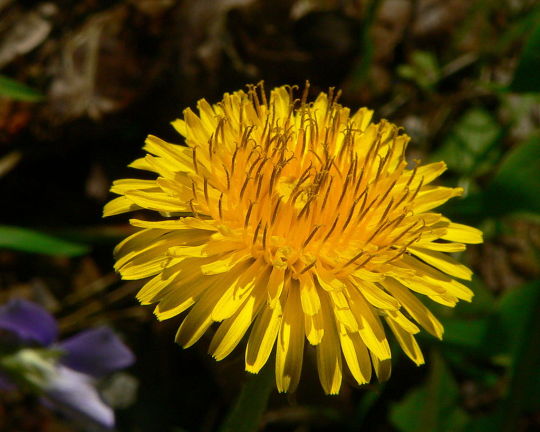
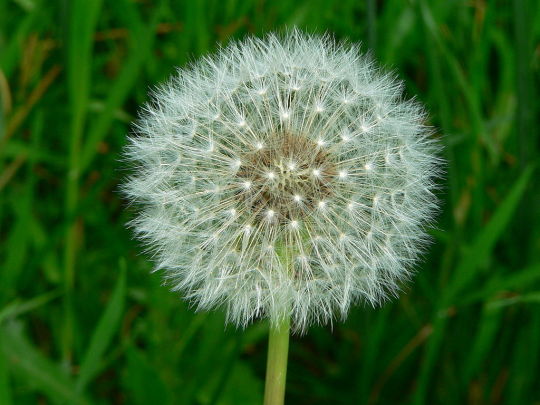
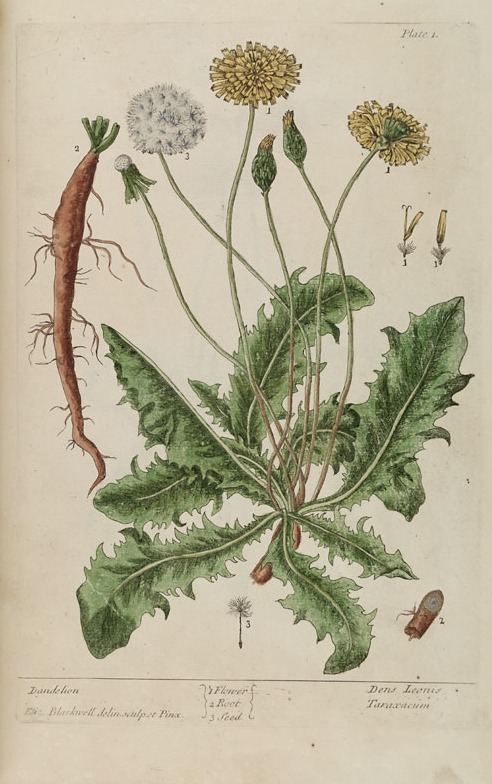

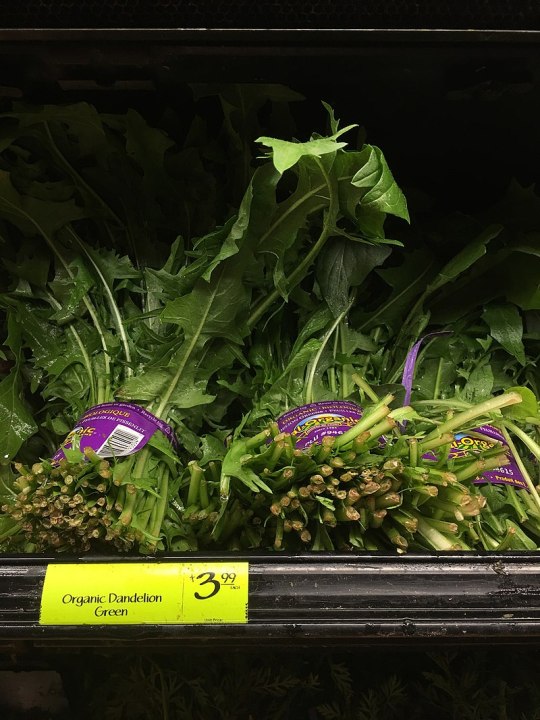




Dandelion Taraxacum
A dandelion flower head composed of numerous small florets (top). The seedhead is shown below it.
Taraxacum (/təˈræksəkəm/) is a large genus of flowering plants in the family Asteraceae, which consists of species commonly known as dandelions. The scientific and hobby study of the genus is known as taraxacology. The genus is native to Eurasia and North America, but the two most commonplace species worldwide, T. officinale (the common dandelion) and T. erythrospermum (the red-seeded dandelion), were introduced from Europe into North America, where they now propagate as wildflowers. Both species are edible in their entirety.[6] The common name dandelion (/ˈdændəˌlaɪ.ən/DAN-də-ly-ən; from French dent-de-lion 'lion's tooth') is also given to specific members of the genus.
Like other members of the family Asteraceae, they have very small flowers collected together into a composite flower head. Each single flower in a head is called a floret. In part due to their abundance, along with being a generalist species, dandelions are one of the most vital early spring nectar sources for a wide host of pollinators.[7] Many Taraxacum species produce seeds asexually by apomixis, where the seeds are produced without pollination, resulting in offspring that are genetically identical to the parent plant.[8]
In general, the leaves are 50–250 mm (2–10 in) long or longer, simple, lobed-to-pinnatisect, and form a basal rosette above the central taproot. The flower heads are yellow to orange coloured, and are open in the daytime, but closed at night. The heads are borne singly on a hollow stem (scape) that is usually leafless and rises 10–100 mm (3⁄8–3+7⁄8 in) or more[5] above the leaves. Stems and leaves exude a white, milky latex when broken. A rosette may produce several flowering stems at a time. The flower heads are 20–50 mm (3⁄4–2 in) in diameter and consist entirely of ray florets. The flower heads mature into spherical seed heads sometimes called blowballs[9] or clocks (in both British and American English)[10][11][12][13] containing many single-seeded fruits called achenes. Each achene is attached to a pappus of fine hair-like material which enables wind-aided dispersal over long distances.[citation needed] The flower head is surrounded by bracts (sometimes mistakenly called sepals) in two series. The inner bracts are erect until the seeds mature, then flex downward to allow the seeds to disperse. The outer bracts are often reflexed downward, but remain appressed in plants of the sections Palustria and Spectabilia. Between the pappus and the achene is a stalk called a beak, which elongates as the fruit matures. The beak breaks off from the achene quite easily, separating the seed from the parachute.
1 note
·
View note
Text
who run the world? girls (dandelions reproducing asexually by apomixis, producing genetically identical daughter plants)
675 notes
·
View notes
Photo




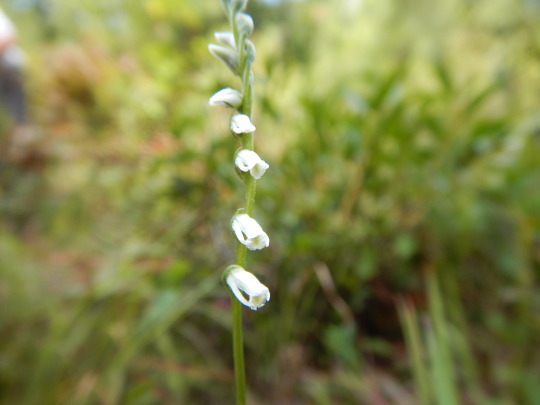

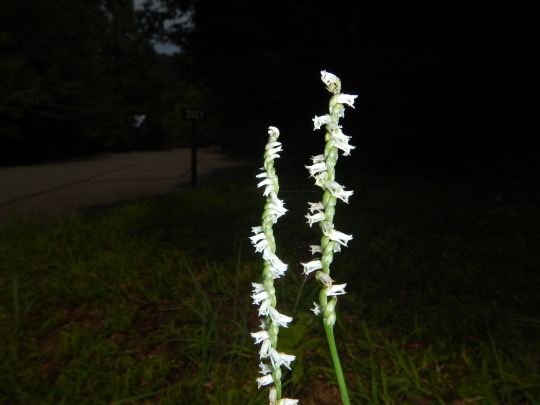
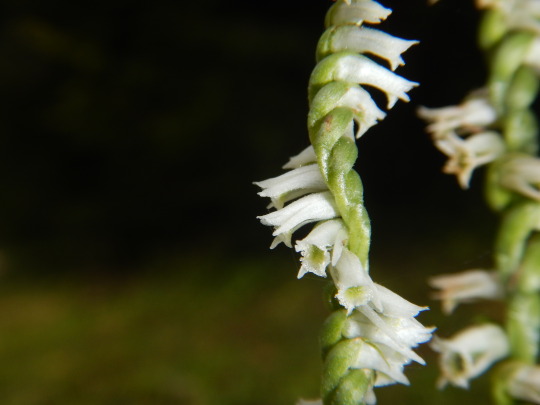


Im currently doing a review for my evolutionary botany class on pollination methods involved with a specific grouping of orchidaceae, Spiranthes spp.and one resolution method, utilizing levels of apomixis, that was of signifigance in resolving S cernua complex; and the reasons for their success. I don’t want to limit myself to just S. cernua though and am seeking out all Spiranthes spp. with apomixis agamospermy regeneration present. Ill prob post something on instagram about it when im done.
#spiranthes cernua#spiranthes#spiranthes spiralis#spiranthes vernalis#spiranthes tuberosa#botany#apomixis
37 notes
·
View notes
Text
What is Apomixis and What is its Importance in Plants?
What is Apomixis and What is its Importance in Plants?
In this tutorial, we have discussed “What is apomixis and what is its Importance in plants?”
What is Apomixis
The formation of new individuals through the normal process of sexual reproduction by the meiotic formation of gametes and their subsequent fusion during fertilisation is called amphimixis. The formation of new individuals through asexual reproduction without the formation and fusion of…

View On WordPress
0 notes
Photo

A dandelion really doesn’t need anybody else. They live their cloned apomixis lives without romantic drama. It’s one of the first flowers to bloom in spring, to the delight of bees and has many health benefits from flower to root. Dandelion greens have been a food staple for centuries, and the blossom is quite tasty fried and dipped in remoulade. This simple flower symbolizes happiness, joy and youthful thoughts, and brings with it the warmth and power of the rising sun. I find this often overlooked little dandelion flower aspiring, it survives and thrives in difficult situations, takes root in challenging terrains and will still give joy and healing with a its cute, cheerful sunny face and soft puffball heart. I want to grow up to be a dandelion! #dandelion #notaweed #apomixis #asexual #clone #flower #healingplants #loop #love #instagood #beautiful #happy #nature #instamood #bethedandelion #bestoftheday #sunsout (at Mingo Creek County Park) https://www.instagram.com/p/COdyzbxh9It/?igshid=jjun5syf3g68
#dandelion#notaweed#apomixis#asexual#clone#flower#healingplants#loop#love#instagood#beautiful#happy#nature#instamood#bethedandelion#bestoftheday#sunsout
0 notes